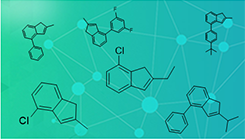The threat to health care posed by the misuse of antimicrobial drugs has not crept up on us. As long ago as 1945, bacteriologist Alexander Fleming said, after winning a Nobel prize for his part in the discovery of penicillin, that overuse of the drug might lead to forms of bacteria that were resistant to its effects.
If left unchecked, drug-resistant diseases could kill more people than cancer. Despite the warnings, and a global consensus among scientists and policymakers that something must be done to address resistance to antimicrobial drugs, society has struggled to respond.
Researchers are investigating ways to slow the rise of antimicrobial resistance. Insights into how and when genes that confer resistance persist in bacteria, for instance, could lead to new treatment strategies. Some scientists are seeking to reinvigorate the existing antimicrobial armoury to overcome bacterial defences. And others are advocating fresh approaches to antibiotic development that could finally bring more drugs to market.
But the lack of new antibiotics is not just a biochemical problem — it is also a considerable economic challenge. Antibiotics are not an attractive investment: development is costly, prices are low and new drugs are likely to be used sparingly. To combat this and provide incentives for antibiotic research, pharmaceutical companies and governments are exploring different approaches, including a subscription-based model.
Government intervention is also key to driving down the use of antimicrobials. Promotion of better hygiene, as has become commonplace during the COVID-19 pandemic, could help. Action is also required to tackle the use of antimicrobials in livestock farming — on land and in the sea. Government regulation in China has considerably lowered the country’s once-soaring use of antibiotics in agriculture. European countries are also successfully reducing antibiotic use in livestock, whereas the United States has some catching up to do.
We are pleased to acknowledge the financial support of Shionogi in producing this Outlook. As always, Nature retains sole responsibility for all editorial content.




